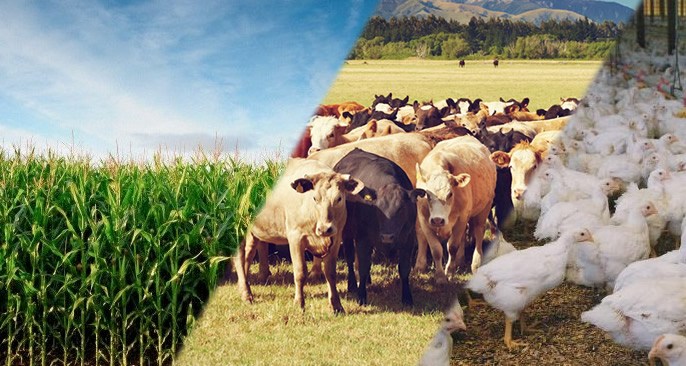
Image: Pixabay
The Institute for Applied Economic Research (Ipea) revised, this Thursday (23), the value added (VA) of the agricultural sector from 1.7% to 1.2% in 2021. The reductions in productivity and production estimates in corn and A less favorable scenario for milk production were the reasons considered for the adjustments made by researchers from the Ipea Situation Group.
The added value of vegetable production in 2021 was also revised downwards: from 1.7% to 1.2%, due to the revision of the corn production estimate, which should show a drop of 15.5% – according to an IBGE survey. Despite this, the result for the component should be positive, supported by the significant increases in the production of soybeans (+10.1%), rice (+4.3%) and wheat (+32.9%). Among the crops with the highest participation in the VA of this component, soybeans are the only one that shows growth prospects for the year. The other most important crops should negatively influence the result of this component due to climate reasons: corn (-15.5%), sugar cane (-3.7%) and coffee (-21.2%).
Animal production was revised from 1.8% to 1.2% this year. Despite the growth in the production of poultry (+6.8%), pigs (+8.7%) and eggs (+1.4%), the projection is for a drop in the two products with the greatest share in added value: cattle (-0. 9%) and milk (-0.4%). Among these, the revision of the projection for milk was mainly responsible for the lower growth estimate for animal production. Pedro Garcia, associate researcher at Ipea and one of the authors of the note, recalls that “the increase in production costs is a factor that has discouraged milk production”. Despite the slight recovery in beef consumption, the rise in protein prices and the negative impact of the pandemic on the job market resulted in a more unfavorable scenario.
{module Form RD}
For 2022, the estimate was revised marginally with an increase from 3.3% to 3.4% in the value added in the agricultural sector, with growth of 2.2% in animal production (compared to an increase of 1.8% in the most recent publication) and 3.9% in vegetable production (maintained since the previous forecast). There is a positive outlook due to expectations of growth in soybean and corn crops; recovery in growth in cattle production (after two consecutive years of decline) and a new estimated increase in pig production.
The researchers point out that the risk scenario for agricultural production remains in line with what was previously disclosed – in Economic Note nº. 18, August this year. For 2021, there is a possibility of residual effects of the La Niña climate phenomenon on crops still being harvested, such as sugar cane. Animal production may continue to suffer the effects of changes in relative prices and increases in production costs. For 2022, there are still doubts about the climate cycle that will prevail in the harvest, its intensity and the effects on vegetable production; but in animal production, the scenario is one of normalization of the supply of cattle.
The survey continues to be carried out based on estimates from the Systematic Survey of Agricultural Production (LSPA), from the Brazilian Institute of Geography and Statistics (IBGE), and on projections specific to livestock farming based on data from the Quarterly Animal Slaughter Survey, from Production of Chicken Eggs and Milk. In this edition, the National Supply Company (Conab) participates in the forecasts for 2022 for the vegetable production segment.
Source: DATA












